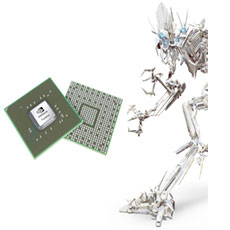Solid-State Drives

Computer repair miami Solid-State Drives
Conventional hard disk drive platters are still manufactured the same way they have always been. They are metal or glass discs with a magnetic coating on their surface. The read/write heads change the magnetic orientation of each bit location, storing either a binary one or a binary zero. Computer repair miami knows that same head senses the magnetic orientation of each location as the data is read from the disc. In contrast, solid-state drives (SSD) have no moving parts, but use the same solid-state memory technology found in the flash memory of recent years. All solid-state memory is limited to a finite number of write (including erase) operations. Algorithms have been developed to constantly spread the write operations over the entire device. Such “wear leveling” increases the life of the SSD, but lack of longevity remains a disadvantage of this technology. SSDs are more reliable and less susceptible to damage from physical shock than their magnetic counterparts. However, the technology to build an SSD is still more expensive per byte, and SSDs are not yet available in capacities high enough to rival the upper limits of legacy hard disk drive technology.
Development and adoption of SSDs has been driven by a rapidly expanding need for higher input/output performance. Computer repair miami High performance laptops, desktops or any application that needs to deliver information in real-time or near real-time can benefit from SSDs. Historically, SSDs have been much more expensive than conventional hard drives. Due to improvements in manufacturing technology and expanded chip capacity, however, prices have dropped, leading both consumers and enterprise-level customers to re-evaluate SSDs as viable, if still expensive, alternatives to conventional storage.
 Steven, L.
Steven, L.










